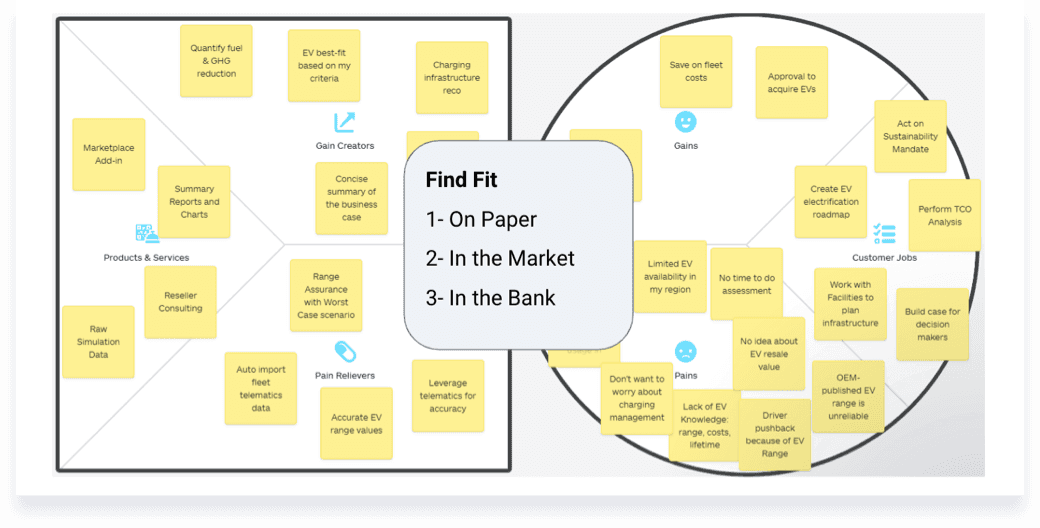AUTOMOTIVE | 0-1 B2B WEB APP DESIGN
Electric Vehicle Suitability Assessment at Geotab
Project description
Geotab is a global leader in connected vehicle and asset solutions, leveraging advanced data analytics and AI to enhance fleet performance, safety, and sustainability while optimizing costs.
The Problem
Commercial and government vehicle fleets are looking to replace their conventional vehicles with electric vehicles (EVs) but are not sure whether this transition would help them save money, or if EVs would suit their current operations and sufficiently reduce their carbon footprint.
Our Solution
We set out to create the Electric Vehicle Suitability Assessment (EVSA) application, an easy-to-use tool to help fleet managers determine the viability of replacing their current fleet vehicles with EVs.
My Role
I led and worked on all aspects of the design of this new product, including design strategy and principles, interaction, UI design, and usability testing. I also collaborated with the product manager on defining and measuring success metrics.
Our general process
Design a framework for collaboration
Worked with the team to define how we may best work together to ensure efficiency and alignment.
Validate the problem
Led by the product manager, we undertook discovery to validate the problem was worth solving at this time.
Scope the solution
Led by the product manager, we undertook solution validation interviews to figure out what possible features and functionality would make for a viable first release.
Define the design strategy
With a focus on user and customer goals, I established a design direction, getting alignment with the team throughout the process.
Design the interactions
Led the end-to-end interaction and visual design, iterating as I received feedback from the team.
Test the solution
Conducted usability testing sessions with users to ensure that the product met user expectations and was easy to use.
Release and monitor
Released the first version of the product and monitored user adoption, collecting feedback for improvements.
Validate the problem
Scope the solution
Define the design strategy

Design the interactions
Test the solution
Release and monitor
Solution
The resulting Electric Vehicle Suitability Assessment (EVSA) app was a tool that guided the user step-by-step through the EV evaluation and comparison process, showing them where in made sense from a financial and environmental perspective to replace their conventional fleet vehicles with electric vehicles.
Trust over everything
The core design principle guiding how we built the product was around building user trust through accuracy and transparency.
Direction over choice
Because EV evaluations for vehicle fleets were new for the industry we favoured guiding users through a narrowly define set of options/paths to reduce confusion and increase efficiency.
Function over form
This was a strictly business tool, so that while we cared that it looked good, our priority was to make sure it did job required by users well.












